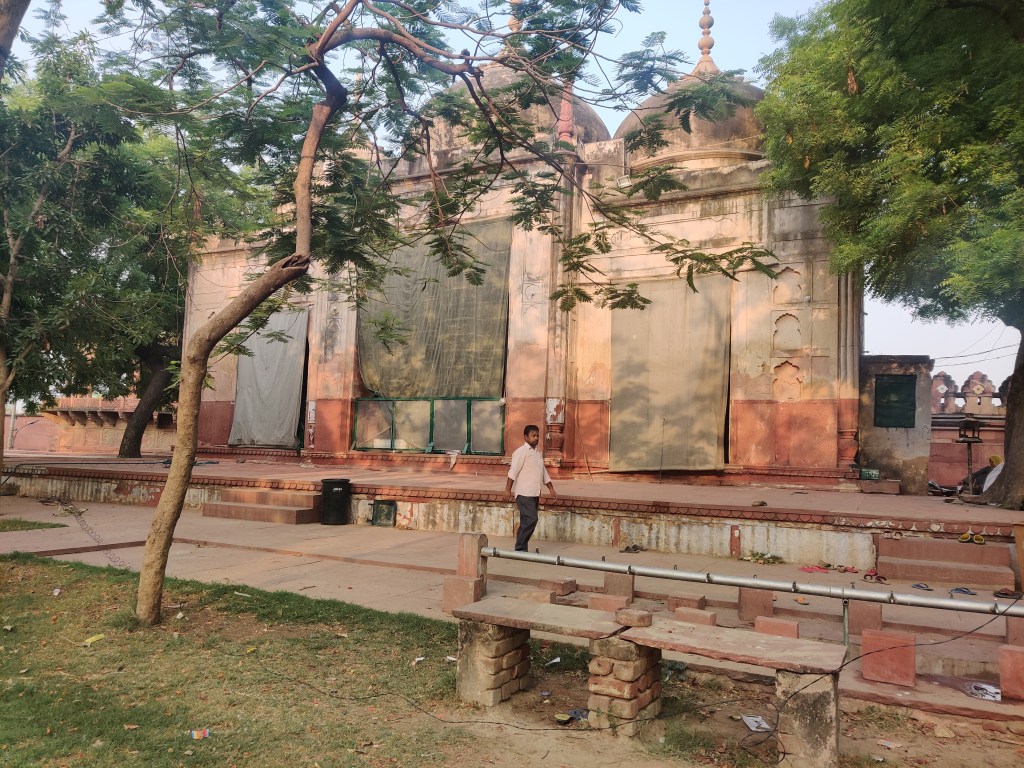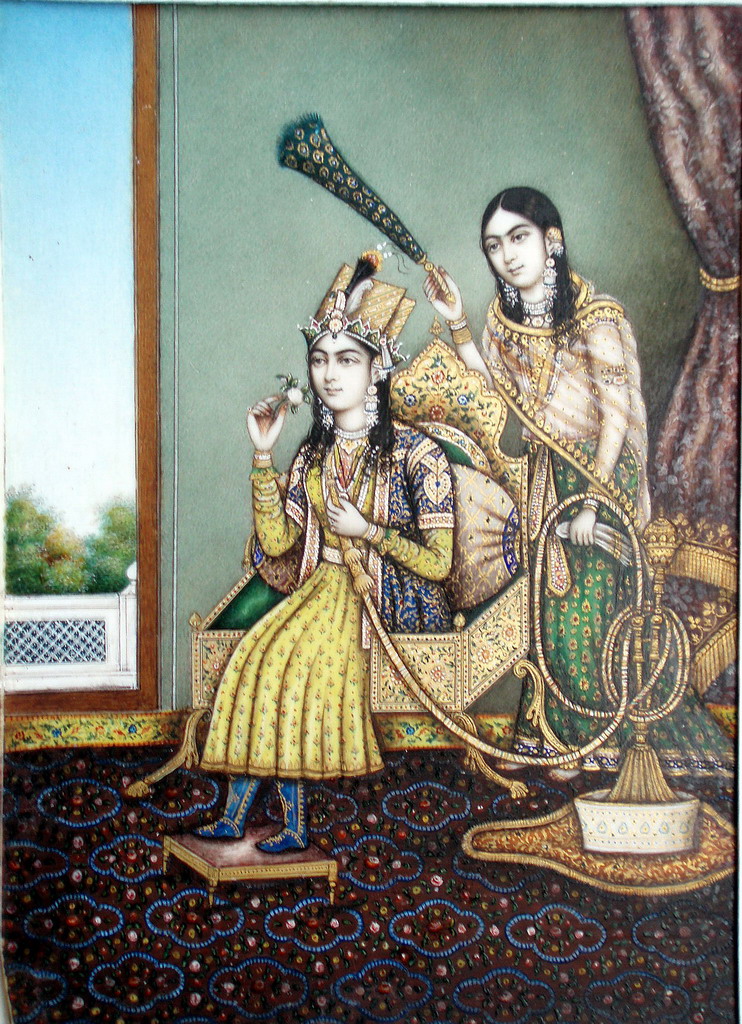I am using the word “Best friend” here very loosely, mostly because locally, it is known as the tomb of the best friend. Why am I considering it under my Monument of Love series? Because, a good friend, irrespective of gender, is the strongest foundation on which our social existence is often built. And sometimes, the love of your friend stands longer and stronger than any other bond.
“Because everything of value that we will know in this life comes from our relationships with those around us. Because there is nothing material that measures against the intangibles of love and friendship.”
R.A. Salvatore, Passage to Dawn
Built along the outer periphery of the Taj compound in Agra are four modest tombs, each located at the edge of the boundary wall, at separate corners. These tombs are built on elevated platforms that are at the same height as the wall and are, thus, well above eye level for visitors. Not that visitors to Taj have actually made an effort to look, such is the lure of the Taj Mahal. While three out of the four have been identified as ones belonging to Shah Jahaan’s wives, it’s the fourth one that fits the theme of the series better. According to architect-historian Lucy Peck, the location of Saheli Burj matches the description of the grave of Sati-un-Nisa Khanum. While her tomb is more simplistic given that it lacks a marble dome, the privileged position of placing the tomb within the inner limits of Taj Mahal, is indicative of her higher status, at least in the eyes of Shah Jahan.
Sati-un-Nissa was born in Persia, in a family of scholars and doctors. She was related to notable personnels who were deeply entrenched in royal family – Taleb Amoli, her younger brother was the poet laureate of the Mughal emperor Jahangir from 1618 till his death, while her maternal uncle was the chief physician to Safavid Shah Tahmasp I, the second Shah of Safavid Iran from 1524 to 1576. Sati-un-Nisa Khanum joined the services of Mumtaz Mahal following the death of her husband. Her knowledge of medicine and courtly etiquette, combined with her skills as a reciter and teacher of Quran recitation was distinguished, and as such she was promoted to the head of the Empress’ establishment, and named as muhr-dar, the bearer of her seal. Under her tutelage, Jahanara Begum, Mumtaz’s daughter, became a respected poet in Persian language.

Beyond her influence with Mumtaz Mahal, Shah Jahan also recognised her merit by appointing Sati-un-Nissa as Sadr-i-Nath, an officer in charge of grants to the needy. Under this role, she was responsible for the disbursement of support to indigent women, especially unwed virgins who needed dowry for marriage, and to answer petitions by widows, scholars and theologians. As mahaldar (or chief matron), she was expected to be the Emperor’s eyes and ears in the imperial harem. She would inform him of the reports received from the public (waqia-nawis) and private (khufyan-nawis) news writers, and respond to them on his dictation. At Mumtaz Mahal’s death during childbirth in 1631, Sati-un-Nissa escorted her body to Agra for burial. In fact, historians report that while Shah Jahan was immersed in his grief, his newborn daughter, Gauhar Ara, was raised by Sati-un-Nissa.
A year after Sati-un-Nissa’ death, her body was moved to Agra where a tomb was built near the outer quadrangle of the Taj Mahal. I presume it is most likely the close familial relationship that Sati has developed with the Mughal family that has resulted in the impression that Mumtaz Mahal and Sati-un-Nissa were best friends. There is no way to verify that fact. But the locals have definitely taken this notion further to say that all animals, within the shelter of the tomb, irrespective of their species, act as best friends and share a common space. Isn’t it cool how folklores add another layer to history?
Pro Tip: To explore my “version of Agra”, I will recommend booking for the Secret Taj Tour with Agra beat. They are incredible proactive within the community and are trying to make Agra, a city beyond Taj. You can connect with Amit Sisodia at +91 9897055383. I stayed at Ekaa Villa and Kitchen agra, a one of a kind boutique hotel in Agra.
For a smooth experience of exploring the monuments of Agra (and Delhi), I would recommend purchasing the tickets in advance (I have linked the payment portal for ease of reference!). How advance? Well, for the smaller buildings, you can just purchase the ticket while walking towards the entrance gate or even at the ticket counter. But, for Taj Mahal, I would recommend one day prior booking. They have a time slot system of ticket booking – go as early as possible to experience Taj Mahal at its finest.
I left my hotel at 4.45 AM and I was inside the premises within 5.15 AM. As you can see, the most minimal number of crowd interefered my experience. It is not necessary to have a guide, but it does help if you are traveling solo, and want good pictures. Post my time at Taj Mahal, I went for the secret Taj tour with the same group.
Monument of Love series:
- Monument I: Emperor, Soldier, Master Builder
- Monument II: The Best Friend
- Monument III: Gift from a Daughter
- Monument IV: The Prince of Exile
- Monument V: The Poet-Warrior
- Monument VI: The Wazir and his son
- Monument VII: The Mercenary
- Monument VIII: The Affable Sultan
Related (and not-so related) Posts:


[…] on my new “Mausoleum of Love” series, here is a new addition for you […]
LikeLike
Reblogged this on yazım'yazgısı (typography).
LikeLike
Thank you for the share 🙂 Cheers!
LikeLike
[…] Mausoleum II: The Best Friend […]
LikeLike
[…] Mausoleum II: The Best Friend […]
LikeLike
[…] Mausoleum II: The Best Friend […]
LikeLike
[…] Mausoleum II: The Best Friend […]
LikeLike
[…] can read up on the rest of the Monument of Love series:Monument I: Emperor, Soldier, Master BuilderMonument II: The Best FriendMonument III: Gift from a DaughterMonument IV: The Prince of ExileMonument V: The […]
LikeLike